
How to Use TDS Meter: Examples, Pinouts, and Specs
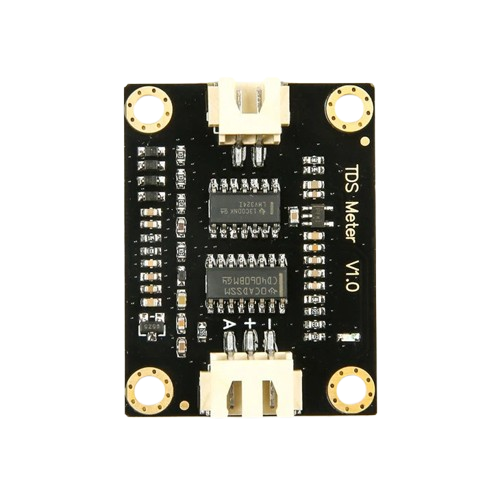
 Design with TDS Meter in Cirkit Designer
Design with TDS Meter in Cirkit DesignerIntroduction
A TDS (Total Dissolved Solids) Meter is an electronic device used to measure the concentration of dissolved solids in water, providing an indication of water quality. It is widely used in applications such as water purification systems, aquariums, hydroponics, and environmental monitoring. By measuring the electrical conductivity of water, the TDS meter estimates the total amount of dissolved ions, such as salts, minerals, and metals, in parts per million (ppm).
Explore Projects Built with TDS Meter
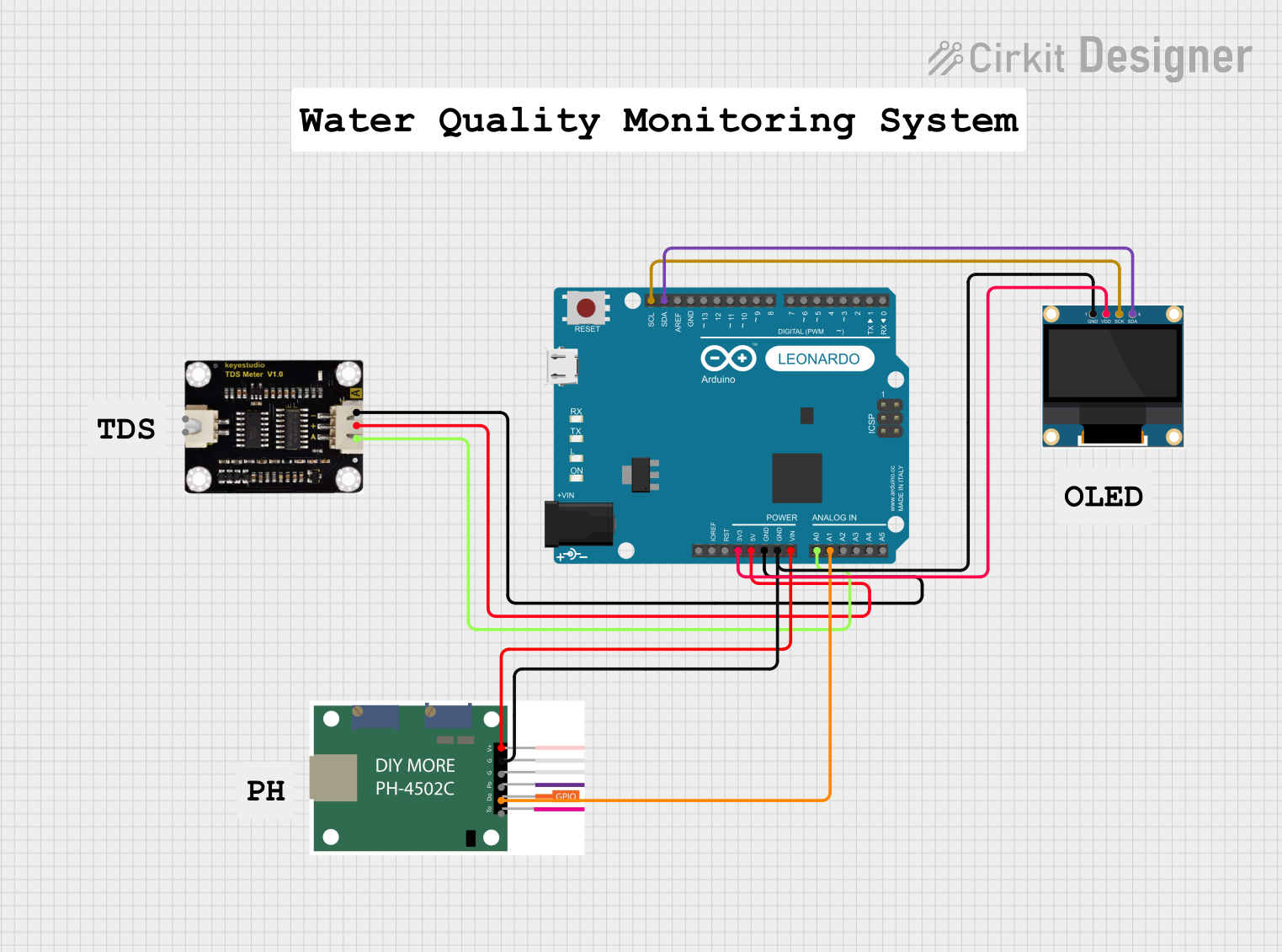
 Open Project in Cirkit Designer
Open Project in Cirkit Designer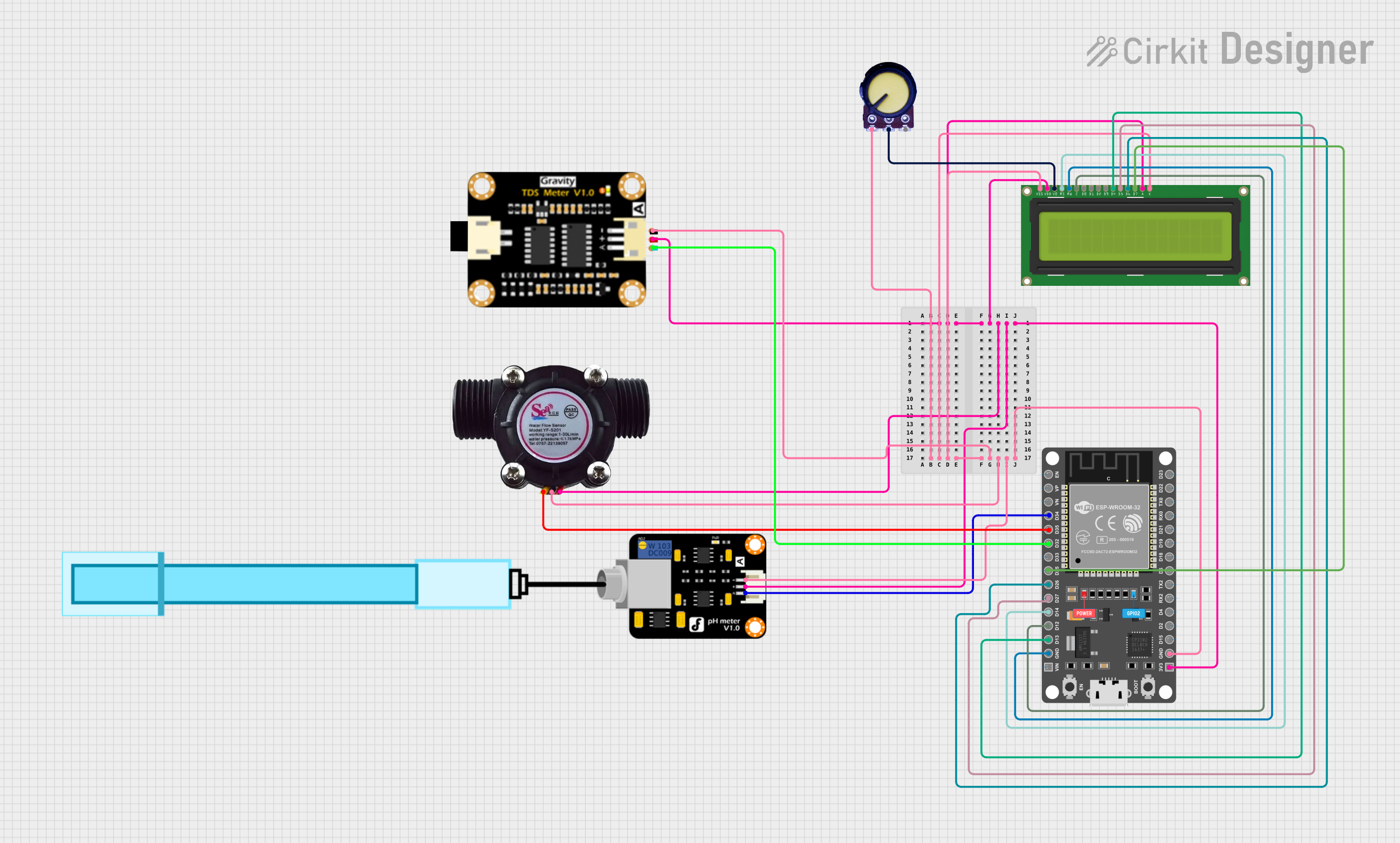
 Open Project in Cirkit Designer
Open Project in Cirkit Designer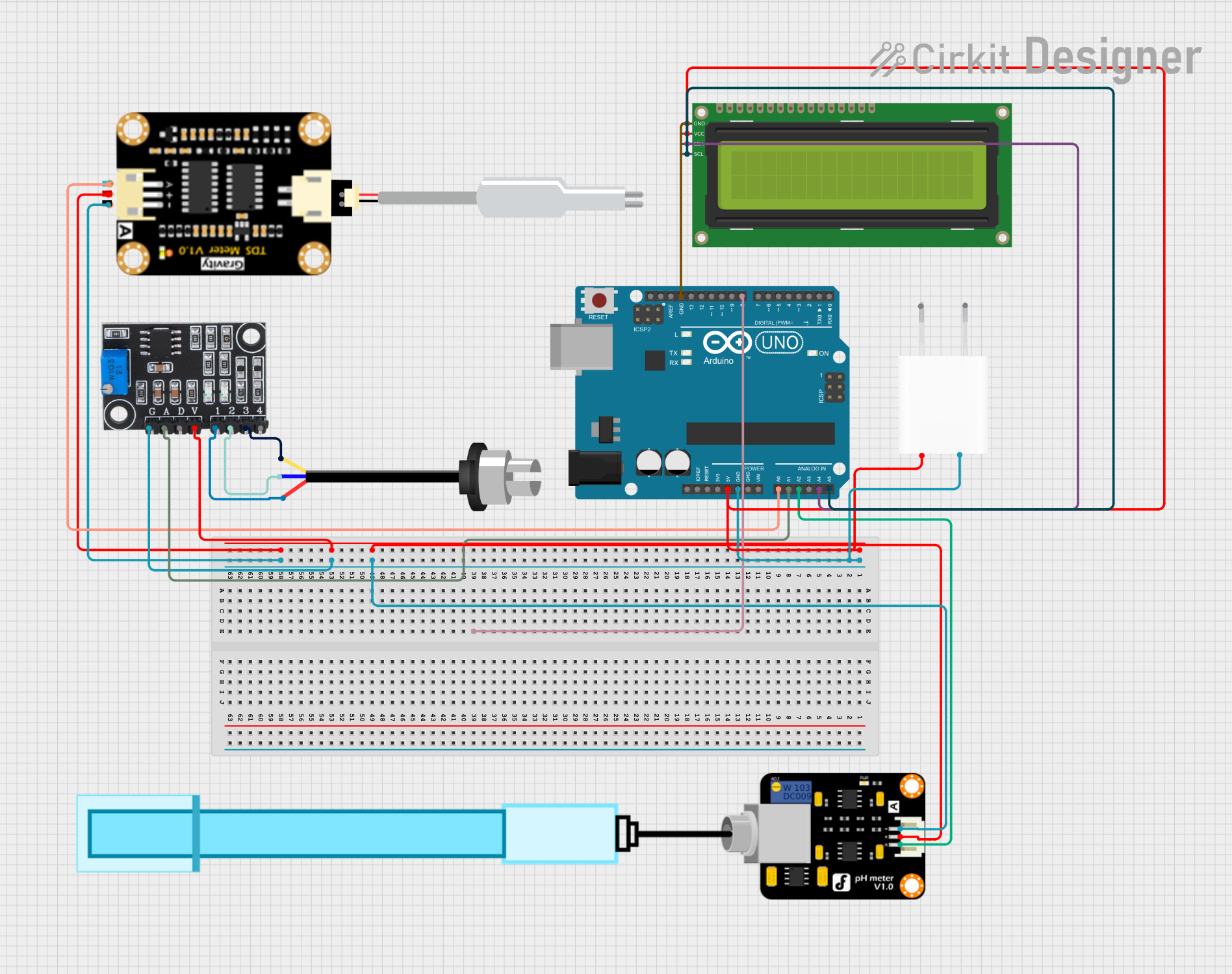
 Open Project in Cirkit Designer
Open Project in Cirkit Designer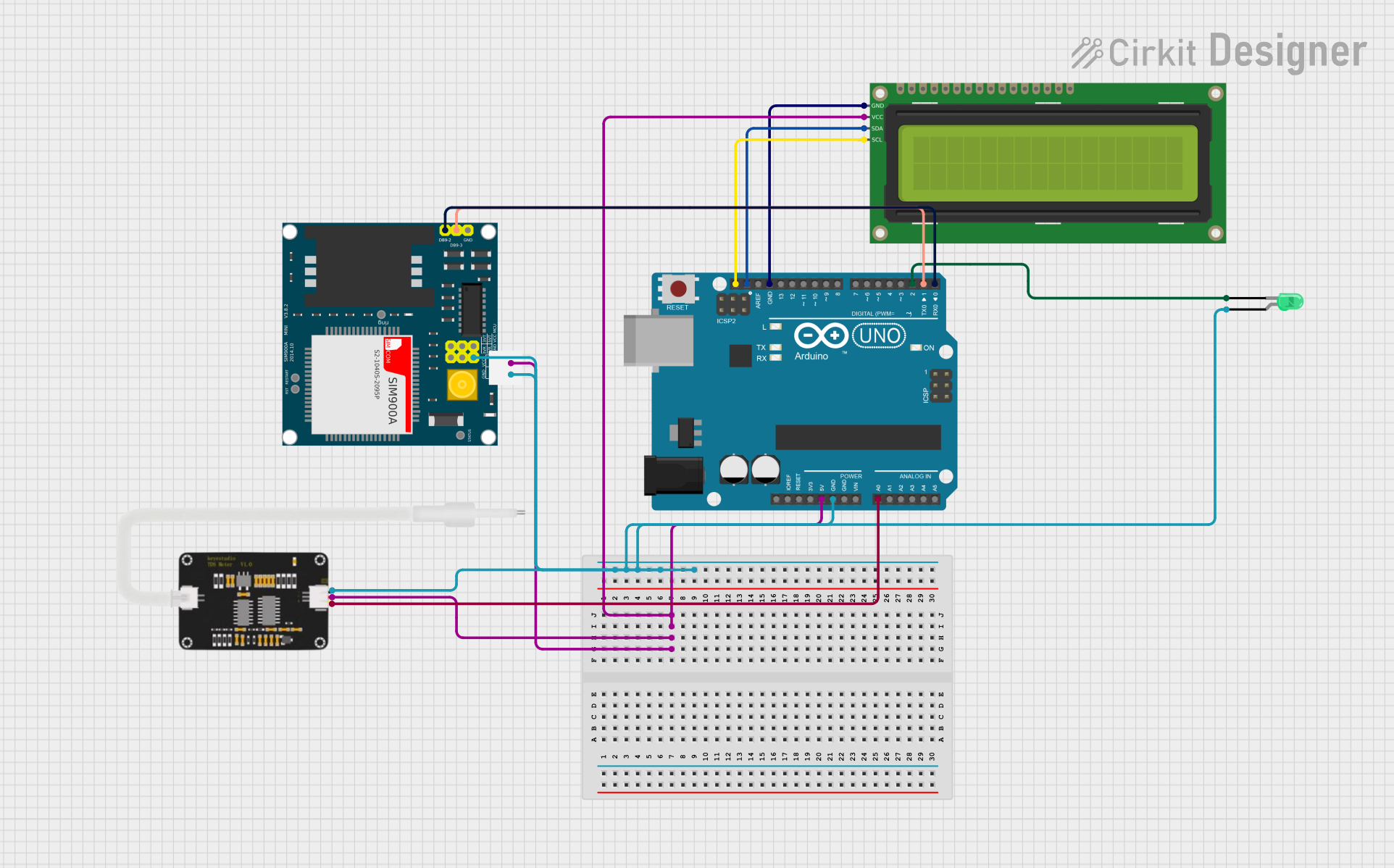
 Open Project in Cirkit Designer
Open Project in Cirkit DesignerExplore Projects Built with TDS Meter

 Open Project in Cirkit Designer
Open Project in Cirkit Designer
 Open Project in Cirkit Designer
Open Project in Cirkit Designer
 Open Project in Cirkit Designer
Open Project in Cirkit Designer
 Open Project in Cirkit Designer
Open Project in Cirkit DesignerCommon Applications and Use Cases
- Monitoring water quality in drinking water systems
- Ensuring proper nutrient levels in hydroponic farming
- Testing water in aquariums to maintain a healthy environment for aquatic life
- Evaluating the performance of water filtration and purification systems
- Environmental testing of natural water sources like rivers and lakes
Technical Specifications
Below are the typical technical specifications for a TDS meter module:
| Parameter | Value |
|---|---|
| Operating Voltage | 3.3V - 5V DC |
| Operating Current | 10mA (typical) |
| Measurement Range | 0 - 1000 ppm |
| Accuracy | ±10% of reading |
| Output Signal | Analog voltage (0 - 2.3V) |
| Temperature Compensation | Yes (built-in) |
| Probe Material | Stainless steel |
| Cable Length (Probe) | ~1 meter |
Pin Configuration and Descriptions
The TDS meter module typically has a 3-pin interface:
| Pin | Name | Description |
|---|---|---|
| 1 | VCC | Power supply input (3.3V - 5V DC) |
| 2 | GND | Ground connection |
| 3 | AOUT | Analog output signal proportional to the TDS value (0 - 2.3V for 0 - 1000 ppm) |
Usage Instructions
How to Use the TDS Meter in a Circuit
Connect the Module:
- Connect the
VCCpin to a 3.3V or 5V power source. - Connect the
GNDpin to the ground of your circuit. - Connect the
AOUTpin to an analog input pin of your microcontroller (e.g., Arduino).
- Connect the
Place the Probe:
- Submerge the stainless steel probe into the water sample. Ensure the probe is fully immersed but avoid submerging the module itself.
Read the Output:
- The module outputs an analog voltage signal on the
AOUTpin. This voltage is proportional to the TDS value in ppm.
- The module outputs an analog voltage signal on the
Calibrate the Meter:
- Use a known TDS calibration solution to adjust the readings for accuracy. Some modules include a potentiometer for manual calibration.
Important Considerations and Best Practices
- Temperature Compensation: Ensure the water temperature is within the module's operating range. Most TDS meters include built-in temperature compensation, but extreme temperatures may still affect accuracy.
- Avoid Contamination: Clean the probe after each use to prevent residue buildup, which can affect readings.
- Power Supply: Use a stable power source to avoid fluctuations in the output signal.
- Avoid Immersion of the Module: Only the probe is waterproof; the module itself should not come into contact with water.
Example Code for Arduino UNO
Below is an example of how to use the TDS meter with an Arduino UNO to read and display TDS values:
// Define the analog pin connected to the TDS meter's AOUT pin
const int tdsPin = A0;
// Define the reference voltage of the Arduino (5V for most boards)
const float referenceVoltage = 5.0;
// Define the maximum analog reading (10-bit ADC = 1023)
const int maxADCValue = 1023;
// Define the TDS meter's maximum output voltage (2.3V for 1000 ppm)
const float maxTDSVoltage = 2.3;
// Define the maximum TDS value (1000 ppm)
const int maxTDSValue = 1000;
void setup() {
// Initialize serial communication for debugging
Serial.begin(9600);
}
void loop() {
// Read the analog value from the TDS meter
int analogValue = analogRead(tdsPin);
// Convert the analog value to a voltage
float voltage = (analogValue * referenceVoltage) / maxADCValue;
// Calculate the TDS value in ppm
int tdsValue = (voltage / maxTDSVoltage) * maxTDSValue;
// Print the TDS value to the serial monitor
Serial.print("TDS Value: ");
Serial.print(tdsValue);
Serial.println(" ppm");
// Wait for 1 second before the next reading
delay(1000);
}
Troubleshooting and FAQs
Common Issues and Solutions
Inaccurate Readings:
- Cause: Probe contamination or residue buildup.
- Solution: Clean the probe with distilled water and dry it before use.
No Output Signal:
- Cause: Incorrect wiring or insufficient power supply.
- Solution: Verify all connections and ensure the power supply meets the module's requirements.
Fluctuating Readings:
- Cause: Unstable power supply or electrical noise.
- Solution: Use a decoupling capacitor near the module's power pins and ensure a stable power source.
Module Damage Due to Water Exposure:
- Cause: Immersion of the module instead of just the probe.
- Solution: Replace the module and ensure only the probe is submerged in water.
FAQs
Q1: Can the TDS meter measure salinity?
A1: While the TDS meter measures total dissolved solids, it can provide an indirect estimate of salinity since salts contribute to the dissolved solids. However, it is not as accurate as a dedicated salinity meter.
Q2: How often should I calibrate the TDS meter?
A2: Calibration frequency depends on usage. For critical applications, calibrate before each use. For general use, calibrate monthly or as needed.
Q3: Can I use the TDS meter in hot water?
A3: Most TDS meters are designed for water temperatures between 0°C and 50°C. Avoid using the probe in water outside this range to prevent damage or inaccurate readings.
Q4: What is the lifespan of the TDS probe?
A4: The probe's lifespan depends on usage and maintenance. With proper care, it can last several years. Clean the probe regularly to extend its life.